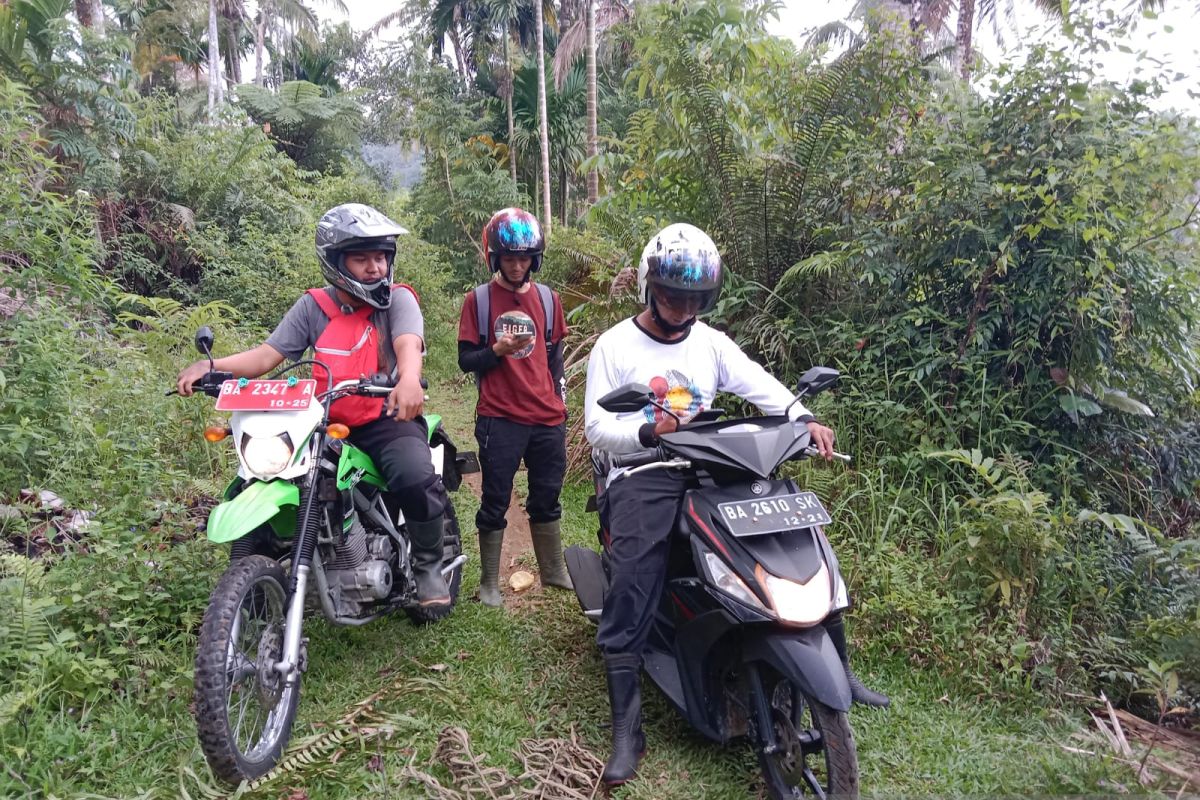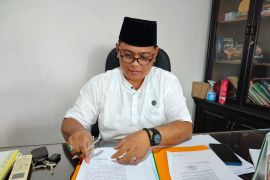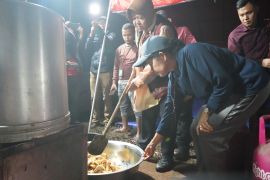The lake measures 16 kilometers (km) in length, seven km in width, and has an average depth of 105 meters (m) as well as a maximum depth of 165 m.
Since 1983, water from the lake has been used to generate electricity for the people of West Sumatra Province through the 68-megawatt (MW) Maninjau Hydroelectric Power Plant (PLTA).
The water in Maninjau Lake comes from 83 tributaries originating in the Maninjau Forest Nature Reserve, which covers an area of about 21,891 hectares.
The nature reserve, which lies between Agam and Padang Pariaman Districts in West Sumatra, is also a shelter and buffer zone for the Maninjau volcanic karst area.
According to head of the Natural Resources Conservation Agency (BKSDA), Maninjau District, Ade Putra, the area has been designated as a nature reserve area based on the Decree of the Environment and Forestry Ministry Number SK.598/Menlhk/Setjen/PLA.2/8/2016.
The area includes 32 traditional villages in 11 sub-districts of both Agam and Padang Pariaman Districts.
Biodiversity
According to Law Number 5 of 1990 concerning Conservation of Natural Resources and their Ecosystems, a nature reserve is a unique area due to its natural conditions with specific plants, animals, and ecosystem, which need to be protected to ensure their natural development.
Hence, such an area’s main function is to preserve the diversity of existing plants and animals, as well as their ecosystem.
In addition, nature reserves can be used for research and development, science, education, as well as cultivation purposes.
A number of plants can be found in the Maninjau nature reserve, including toona tree (Toona sureni, locally called surian), bayur tree (Pterospermum javanicum), madang lilin tree (Litsea roxburghii), and wild durian (Durio zibethinus).
Other species found in the sanctuary are common to forests across West Sumatra province, such as sapek tree (Macaranga sp), fig tree (Ficus sp), candlenut (Aleurites moluccana), Siamese cassia tree (Cassia siamea, locally called johar), as well as meranti tree (Shorea sp, locally called maranti).
In addition, the forest houses a number of rare and protected plants, including the Rafflesia tuan-mudae flower, Rhizanthes sp flower, Amorphophallus sp, tropical pitcher plants (Nepenthes sp), and various types of orchids.
According to the Environment and Forestry Ministry’s website, the world’s biggest Rafflesia tuan-mudae flower was found within the Maninjau Forest Nature Reserve area and measured 1.12 m in diameter.
Meanwhile, the animals found in the nature reserve area include Sumatran tigers (Panthera tigris sondaica), clouded leopards (Neofelis diardi diardi), muntjacs (Muntiacus muntjac), deer (Cervus sp), mouse-deer (Tragulus kanchil), Sumatran serow (Capricornis sumatraensis sumatraensis), siamang (Symphalangus syndactylus), sun bears (Helarctos malayanus), hornbills (Buceros sp), and eagles.
In addition to being a home to various animals and plants, the Maninjau Forest Nature Reserve area is the main water source for 23,378 hectares of rice fields and 360,887 residents in the surrounding villages.
Preservation
Hence, to preserve the sanctuary, a number of activities have been prohibited since they can disrupt the function performed by the area.
The activities include hunting animals living in the area, releasing non-native plants and animals into the area, cutting down and destroying plants, killing animals, as well as taking plants and animals out of the nature reserve.
Other prohibited acts include digging the ground and changing the landscape of the area, which can disturb the life of plants and animals.
Hence, to prevent the threats of illegal logging, trespassing, and hunting, as well as forest fires and land, the BKSDA has been carrying out surveillance and patrol activities in the nature reserve area, Putra informed.
In addition, the BKSDA has been empowering the community living around the forest in Agam District to prevent various threats.
The community empowerment program aims to improve the economy of the people living around the buffer zone of the nature reserve area so that their dependence on the forest area can be reduced.
The program has been carried out in many traditional villages (locally called ‘nagari’), such as Sitanang Village (Ampek Nagari Sub-district), Tigo Balai Village (Matur Sub-district), as well as Tanjung Sani and Sungai Batang Villages (Tanjung Raya Sub-district).
The program has been implemented in Sitanang and Tanjung Sani Villages since 2021. Meanwhile, the empowerment program in Sungai Batang and Tigo Balai Villages was launched in 2022.
Under the program, a farmer group will be established in each village and will be provided assistance of Rp50 million (US$3,390).
There are currently two such empowerment groups—the Anugerah Nagari Tanjung Sani Group and the Karya Maju Nagari Sitanang Group.
At present, the assistance to be provided to them is still being processed for disbursement.
The Anugerah Nagari Tanjung Sani Group will use the aid to develop cow farming, while the Karya Maju Nagari Sitanang Group will set up a chicken farm.
The BKSDA will provide the assistance for the next five years to ensure that the community business runs well.
Head of the Karya Maju Nagari Sitanang Group Harizam said that his group has chosen to build a cow farm since the area has adequate feed for cattle.
Furthermore, he expressed his gratitude for the assistance provided by Maninjau District's BKSDA and said that his group will develop the farm well.
Meanwhile, regarding the two other villages, officials from the BKSDA paid a visit to the communities residing in them on April 20–21, 2022. The empowerment groups for the two villages will be established later this year.
After the groups are formed, business capacity building will be conducted, either by implementing a replication study or inviting a resource person to provide training regarding the sector that will be developed by the groups.
Thus, the Maninjau Forest Nature Reserve will not only serve as a special shelter that protects the ecosystem of the area, but also benefits local residents—as long as all stakeholders are committed to maintaining its sustainability.
Related news: Agam to hold Lake Maninjau festival in 2020
Related news: Ngarai Sianok-Maninjau suggested for inclusion into UNESCO GGp list
Editor: Rahmad Nasution
Copyright © ANTARA 2022












